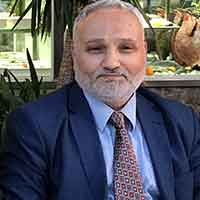In Fed decisions; We observe that the economic projections are revised depending on the size of the recovery, whereas short-term effects are predicted more significant than medium and long-term effects. The new version of the sentence that has changed in the FOMC policy statement as follows; "Economic activity and employment indicators have recently turned up after the slowdown in the recovery rate". The revival and inflation effect of the fiscal package has been reflected in short-term expectations. As a matter of fact, the 2021 GDP growth expectation was revised from 4.2% to 6.5%, and the 2021 PCE inflation expectation was revised up from 1.8% to 2.4%. The core PCE is already a slightly filed version of it. In terms of average inflation targeting, an inflation expectation that will go above the target in 2021 and 2022 is normal. Because, there is an inflation expectation that will cool down in the next stage and then increase organically, as it is expected to be 2% in 2022 and 2.1% in 2023. In other words, the main implication is that the inflation effect of the financial package will be periodic.
Since 2020 is a crisis year, the assumption that recovery and financial package are effective 2021 will point to an above-normal growth with 6.5% is also normal. Fed members' assumptions show growth at 3.3% in 2022 and 2.2% in 2023. In other words, growth will first return to normal after the supported effect of 2021 passes and then will lose momentum. In terms of employment dynamics, the expected rate of 4.5% in 2021 is expected to fall with less momentum in 2022 and 2023, to be around 3.9% and 3.5%. Here, too, the picture is much better than 2020, but more negative than 2019.
There is no change in dot plot estimates. Hence, the Fed is not pushing its interest rate hike schedule forward, but tapering could start somewhere in 2022. On the yield curve side, there is no direct approach due to the idea of inflation assumptions. If inflation will return to normal after a periodic increase, the tightening that the market tries to achieve by selling bonds will also remain periodic. However, it is difficult to predict what kind of imbalances will occur to stay behind the yield curve in the short term. It will still be a threat. After the Fed's announcements, the upward trend of long-term yields may continue at the usual levels in recent days. As for Powell; cautious about the economy and not worried about inflation.












